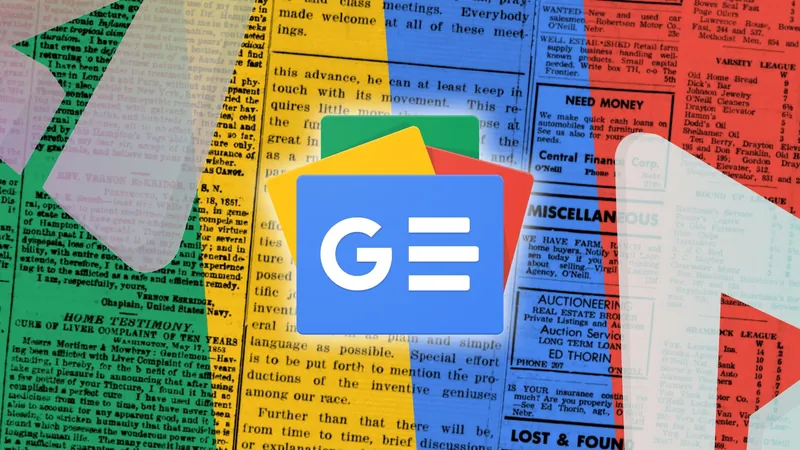
Broadcasting Revolution: Why Now is the Time for Broadcasters to Seize Control of Measurement
2025-04-28
Author: Siti
Rethinking Audience Measurement in a Fragmented World
In an age where viewers are scattered across various platforms, measuring reach, frequency, and performance has never been more challenging for broadcasters and advertisers. Today's audiences consume content not just through traditional TV but also through on-demand services and streaming platforms on multiple devices—often simultaneously within the same household.
This fragmentation forces advertisers to grapple with understanding the overall impact of their campaigns spanning different screens. Despite linear TV still providing significant reach, the advent of digital video and connected TV (CTV) has shifted expectations towards precise, transparent, and real-time performance metrics.
The Old Tools Are Outdated—Time for a Change!
The broadcasting industry stands at a pivotal juncture where traditional measurement tools have become inadequate. But there’s good news: the ecosystem is evolving. Technological advancements, coupled with the rise of return-path data, are transforming the once inscrutable 'black box' of TV into a measurable, actionable field.
Platforms enabling addressable TV through technologies like HbbTV and smart set-top boxes are granting broadcasters an unprecedented look into audience behaviors.
Broadcasters at a Unique Advantage
This transformation presents broadcasters with a unique advantage—one they must capitalize on now. Unlike their competitors, broadcasters possess direct, and often exclusive, access to invaluable datasets within the TV ecosystem.
With tools like HbbTV signals and set-top box data, they can gain proprietary, privacy-compliant insights into viewing habits that are hard for others to mimic.
Moreover, broadcasters can integrate data across various channels, combining linear TV metrics with CTV and online views to provide advertisers with a comprehensive cross-platform analysis.
Act Before It’s Too Late!
The time to act is critical. If broadcasters do not leverage their exclusive data now, they risk falling behind as agencies and digital platforms may step in to set standards and snatch advertiser budgets.
Failure to adapt could result in diminished relevance in discussions about performance and ROI, especially as digital platforms offer deep insights and instant accountability.
Unlocking Opportunities with Deterministic Measurement
Deterministic measurement is a game-changer. Unlike probabilistic models that rely on assumptions, this approach utilizes direct, verifiable signals to track ad exposure across devices and households.
Broadcasters can accurately connect linear, addressable, and CTV impressions to ensure high precision and deduplication while confidently linking exposure to outcomes.
Strategic Advantages Awaiting Broadcasters
Adopting deterministic measurement opens doors to various strategic benefits, including:
1. **Enhanced Advertiser Relationships:** Advanced metrics foster trust and differentiate media offerings.
2. **Informed Internal Planning:** First-party data creates a wealth of intelligence for smarter campaign strategies.
3. **Benchmarking Against Industry Standards:** Quality data facilitates monitoring trends across time and sectors.
4. **Real-time Analytics for Advertisers:** Access to actionable insights allows for campaign optimization.
5. **Data-driven Product Innovation:** Enables the development of new advertising solutions tailored to audience needs.
6. **Performance-centered Pricing Models:** New pricing strategies based on real-world outcomes can be explored.
7. **Delivering on Convergent TV's Promise:** Applying digital best practices to traditional TV will simplify planning and improve accountability.
Seize the Moment!
The window of opportunity for broadcasters is wide open. The technology exists, the data is ready, and the market is eager for a smarter approach to measuring TV and video campaigns.
Those broadcasters who act promptly can set the standards, deepen advertiser relationships, and pave the way for leadership in a continually evolving media landscape. Delay, and they risk being overshadowed by media agencies or digital platforms that line up to take their place.
By adopting deterministic, cross-platform measurement, broadcasters won't just keep pace with digital advancements—they’ll lead the way into the future of media.




 Brasil (PT)
Brasil (PT)
 Canada (EN)
Canada (EN)
 Chile (ES)
Chile (ES)
 Česko (CS)
Česko (CS)
 대한민국 (KO)
대한민국 (KO)
 España (ES)
España (ES)
 France (FR)
France (FR)
 Hong Kong (EN)
Hong Kong (EN)
 Italia (IT)
Italia (IT)
 日本 (JA)
日本 (JA)
 Magyarország (HU)
Magyarország (HU)
 Norge (NO)
Norge (NO)
 Polska (PL)
Polska (PL)
 Schweiz (DE)
Schweiz (DE)
 Singapore (EN)
Singapore (EN)
 Sverige (SV)
Sverige (SV)
 Suomi (FI)
Suomi (FI)
 Türkiye (TR)
Türkiye (TR)
 الإمارات العربية المتحدة (AR)
الإمارات العربية المتحدة (AR)